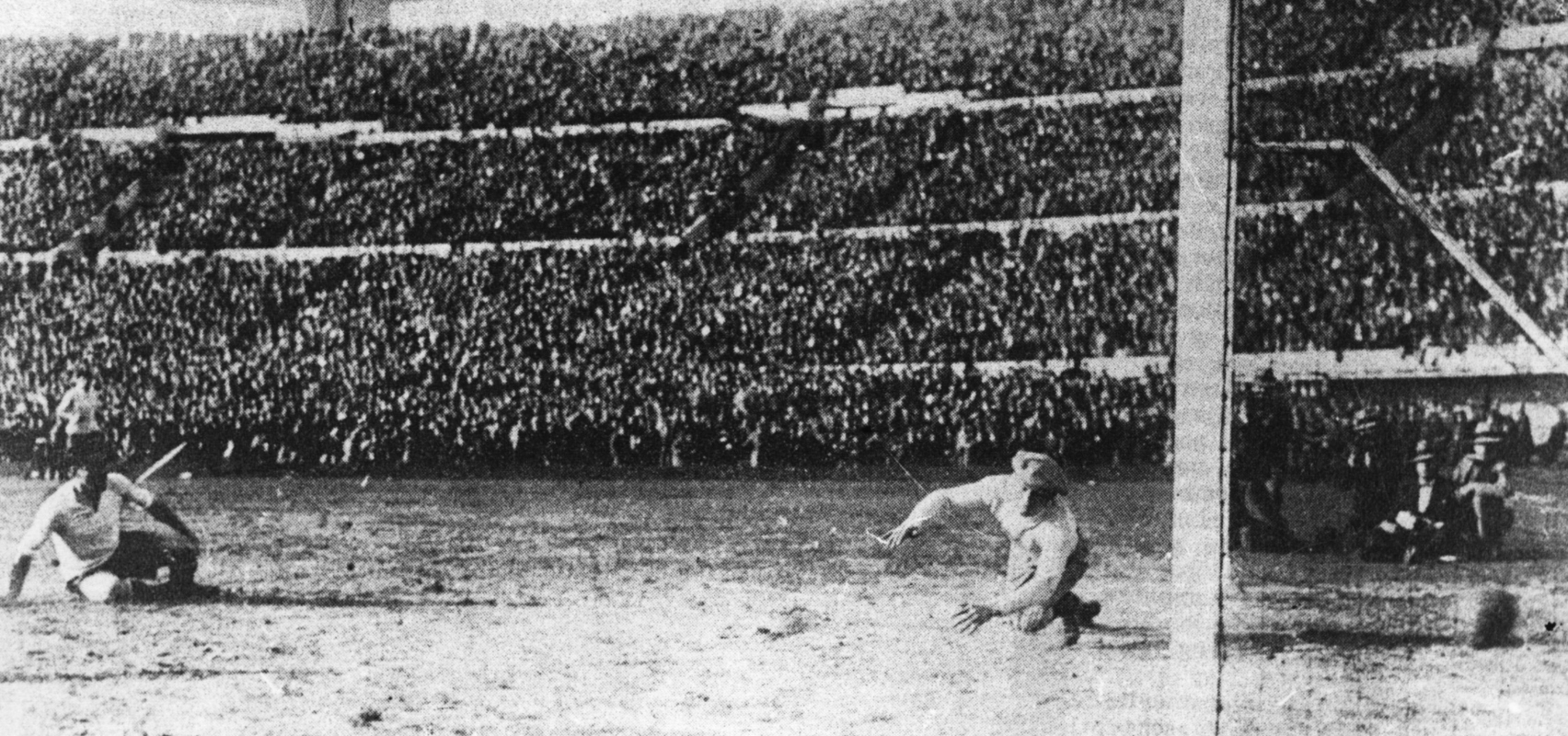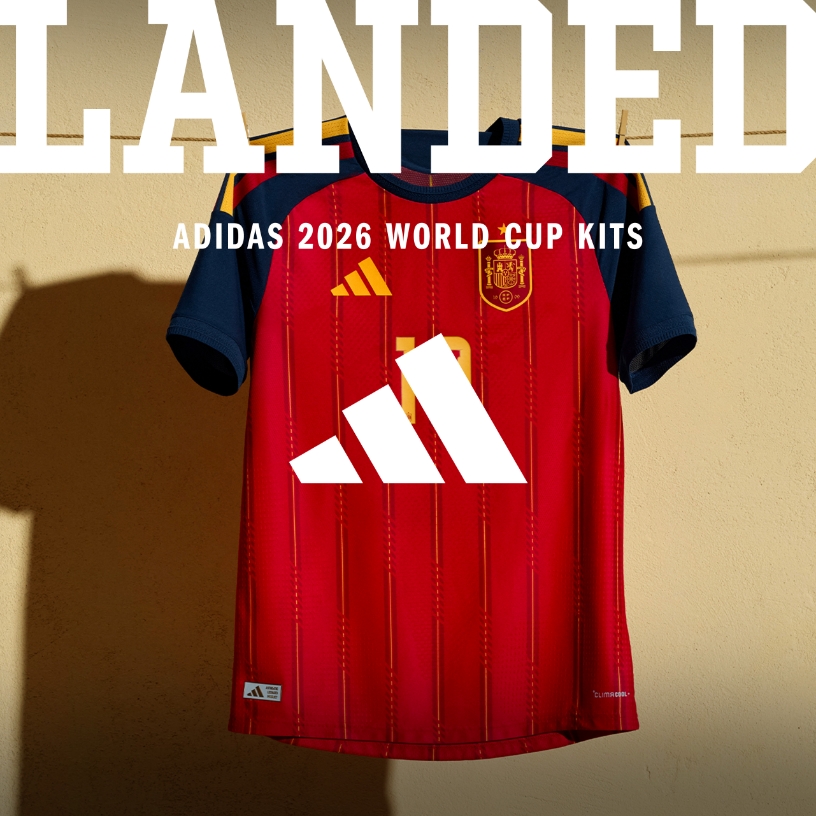Attracting a global audience, symbolising something different for each nation, it’s one of the greatest spectacles in sport. It is of course the World Cup, and the 2022 competition is just about to kick off!
So, to celebrate, we’re looking back at the history of every World Cup to the present day…
How it Started
Prior to its inception, international sides competed against each other as part of the Summer Olympics. Football was becoming more professional, and on the 26th of May 1928, it was declared that there would be a World Cup.
Uruguay, 1930
Two years later, the first World Cup would be held in Uruguay. Given the infancy of the competition, qualification wasn’t needed and, instead, 13 countries were invited to play.
The format was simple: there would be a group phase, followed by semi-finals and a final, with the likes of Argentina, France, Brazil and the USA featuring.
Staged across three stadiums in the capital of Montevideo, the final saw Uruguay defeat Argentina 4-2 in front of over 90,000 people.

Italy, 1934
At Italy ’34, qualifying was incorporated as 36 teams applied to join, with 16 teams heading to the tournament.
This tournament would see group stages replaced in favour of a knockout format. If the match were to finish a draw, an extra 30 minutes would be given to try and find a winner. As penalty shootouts weren’t introduced until 1974, a rematch would be arranged the following day.
This time around, Italy beat Czechoslovakia after extra time to become champions.
France, 1938
Retaining the previous format of 1934, Italy found themselves in another World Cup final, becoming the first nation to win consecutive World Cups, and are still the only country to win the competition more than once under the same coach, Vittorio Pozzo.
Brazil, 1950
After the second World War, the next tournament was held 12 years later in Brazil.
With just 13 teams appearing, a new format was created where winning your group put you into a final group stage.
A final between Uruguay and Brazil in the mega Maracanã Stadium saw just under 200,000 fans watch Uruguay win 2-1.

Switzerland, 1954
Expanding to a global audience, Switzerland ‘54 was the first tournament broadcast on television.
A new format meant that two group matches were played twice while other teams never met. This design was never used again.
Hungary and West Germany met in the final, and with conditions poor, West Germany’s captain Fritz Walter came into his own.
Lacing up in boots with exchangeable studs from Adi Dassler (the man behind adidas), Walter helped Germany overcome a two-goal deficit to win it at the death and break the ‘Golden Team’s’ 32-game unbeaten streak.
Sweden, 1958
Heading to the Nordics for the first time, footballing legend Pele would announce himself to the world.
Seeing his side to the final, Pele bagged a brace alongside two from Vavá and one from Zagallo, as Brazil beat the home nation 5-2.
France’s Just Fontaine notched 13 goals in just six matches – a Golden Boot record from a single tournament that still stands today.
Chile 1962
Known as one of the most brutal tournaments to date with mass brawls a feature of play, the 1962 final at the Estadio Nacional was between reigning champions Brazil and Czechoslovakia. Brazil won 3-1 and retained their title.

England, 1966
Naturally, this is a World Cup that needs little introduction…
West Germany would meet the host nation in the final at Wembley. With the score at 2-2, Geoff Hurst’s famous “Wembley Goal” cannoned under the crossbar. Causing controversy to this day, the referee judged it to have gone over the goal line and England went on to win 4-2.
Mexico, 1970
Technological advancements meant Mexico ‘70 would be the first to be broadcast in colour television. Keen to seize the opportunity, adidas created and sponsored the match ball, the Telstar.
This World Cup also saw the introduction of substitutions, two were allowed per game. Yellow and red cards were also incorporated.
Brazil were in another final, this time up against Italy. A comfortable 4-1 win secured their third trophy.
West Germany, 1974
Four years later, penalty shootouts would be used to find a winner if the game was level after extra time.
This tournament also saw a change in format, as the group winners and runners up would go into a second group phase. The winners of each group would then go into the final.
Reaching the final was West Germany and the Netherlands. Gerd Müller would be the man to score the decisive winner and give West Germany their second World Cup, beating the Dutch 2-1.

Argentina, 1978
In 1978, adidas created a match ball sewn into football folklore, the Tango. This would also be the first competition where the reigning champions didn’t automatically qualify.
The Netherlands were in a consecutive final, sadly for them, but to the delight of Argentina, the result was the same. Argentina won 3-1 after extra time to secure their maiden World Cup title.
Spain, 1982
In Spain ’82, the tournament’s setup included six groups of four teams. The top two teams from each group would go to the second round. Those that remained were divided into four groups of three teams, the winner would progress to the knockout semi-final stage.
Real Madrid’s stadium was chosen to host the final, which Italy defeated West Germany 3-1, sealing their third title.
Mexico, 1986
Making them the first team to host a World Cup for a second time, Mexico ’86 saw an unforgettable moment.
Diego Maradona became a hero to some, a villain to many. Iconic, infamous or both? It depends on who you ask. What can’t be disputed is that his ‘Hand of God’ goal is stuff of legend.
The Estadio Azteca was where 144,600 spectators watched Argentina edge out West Germany with a 3-2 win.

Italy, 1990
Italy was chosen to host the 1990 competition and produced a favourite tournament for many.
The overly defensive back pass was abolished, making way for more attractive football.
Argentina and West Germany faced each other once more. Pedro Monzón and Gustavo Dezotti became the very first players to receive red cards in a World Cup final, resulting in West Germany taking the title.
USA, 1994
The introduction of three points per win created a greater emphasis for attacking play.
Sweden and Bulgaria were the surprise packages of the tournament, both making it to the semi-finals. Two of the predicted favourites Brazil and Italy made it to the final.
With the scores at 0-0 after extra time, Brazil beat Italy on penalties, winning the shootout 3-2.
France, 1998
As the number of groups increased from six to eight, Golden Goal was introduced to the 1998 tournament so that the first goal in extra time would end the match.
Until the final, many thought Ronaldo’s brilliance would serve them a consecutive World Cup title. However, Zinedine Zidane, roared on by the home faithful, dominated Brazil, scoring twice in a comfortable 3-0 win.

Korea & Japan, 2002
Trying to expand the game to a new market, the 2002 World Cup was held across 10 stadiums in South Korea and 10 in Japan.
South Korea shocked the world as they beat both Italy and Spain in the knockout stages, only to come undone in the semi-finals.
Football powerhouses Germany and Brazil met in the final, where the great Ronaldo led Brazil to fifth and final title, beating the Germans 2-0.
Germany, 2006
As Zidane would be remembered for his heroics at the ’98 finals, Germany ’06 would overshadow those achievements…
With France beating Spain, Brazil and Portugal to reach the final, they came up against Italy who had taken down the host nation in the semi-final.
Zidane and Marco Materazzi exchanged goals in the first half, and with the game still level after full time, extra time saw a bizarre moment when Zidane turned on Materazzi, headbutting him in the chest before receiving a red card.
Italy won the penalty shootout 5-3 to claim their fourth title.
Aside from the infamous headbutt, this tournament surpassed the previous record of yellow and red cards. Most memorable of all was Graham Poll mistakenly handing out three yellow cards to Croatia’s Josip Šimunić.

South Africa, 2010
Finally, the World Cup would be held in Africa, more specifically South Africa.
As pre-tournament favourites, Spain met two-time runners-up Netherlands in the final. Referee Howard Webb handed out 14 bookings in the game, with Dutchman John Heitinga receiving a second yellow.
With the clock running out in extra time, Andrés Iniesta broke the Netherlands hearts to secure Spain their first ever World Cup.
It wasn’t until 2015 that it was confirmed that Morocco had actually won the bidding for this tournament, but bribery of officials paved the way for South Africa to host.
Brazil, 2014
The World Cup returned to South America in 2014, with Brazil hosting for a second time.
Goal-line technology was introduced to prevent any ghost goals from occurring, while referees could more accurately mark out the free kick spot and wall line with their new vanishing spray.
Cooling breaks were also put in place amid the soaring temperatures and humidity levels.
Hosts, Brazil, made it to the semi-final. They faced another favourite in Germany, and the home crowds were stunned as the Germans put seven past them, finishing the game 7-1.
Germany would go on to win the tournament through Mario Götze’s extra time winner over Argentina.

Russia, 2018
Russia landed the 2018 World Cup and spent a record sum of money to host the tournament.
The home nation knocked out Spain to reach the quarter finals, but finalists Croatia saw them and England off to book their spot in the final against heavily tipped France.
Playing in Russia’s capital, Moscow, France were always comfortable, finishing up 4-2 winners and taking home their second title.
Qatar, 2022
As the tournament heads to the Middle East, who are you backing to lift the legendary trophy?!
Can Brazil make it six, or will the likes of the Netherlands finally break their World Cup curse?
Take your support up a level with the latest international kits right here!
And for all things football this Winter, make sure you’re following @jdfootball across our socials!














